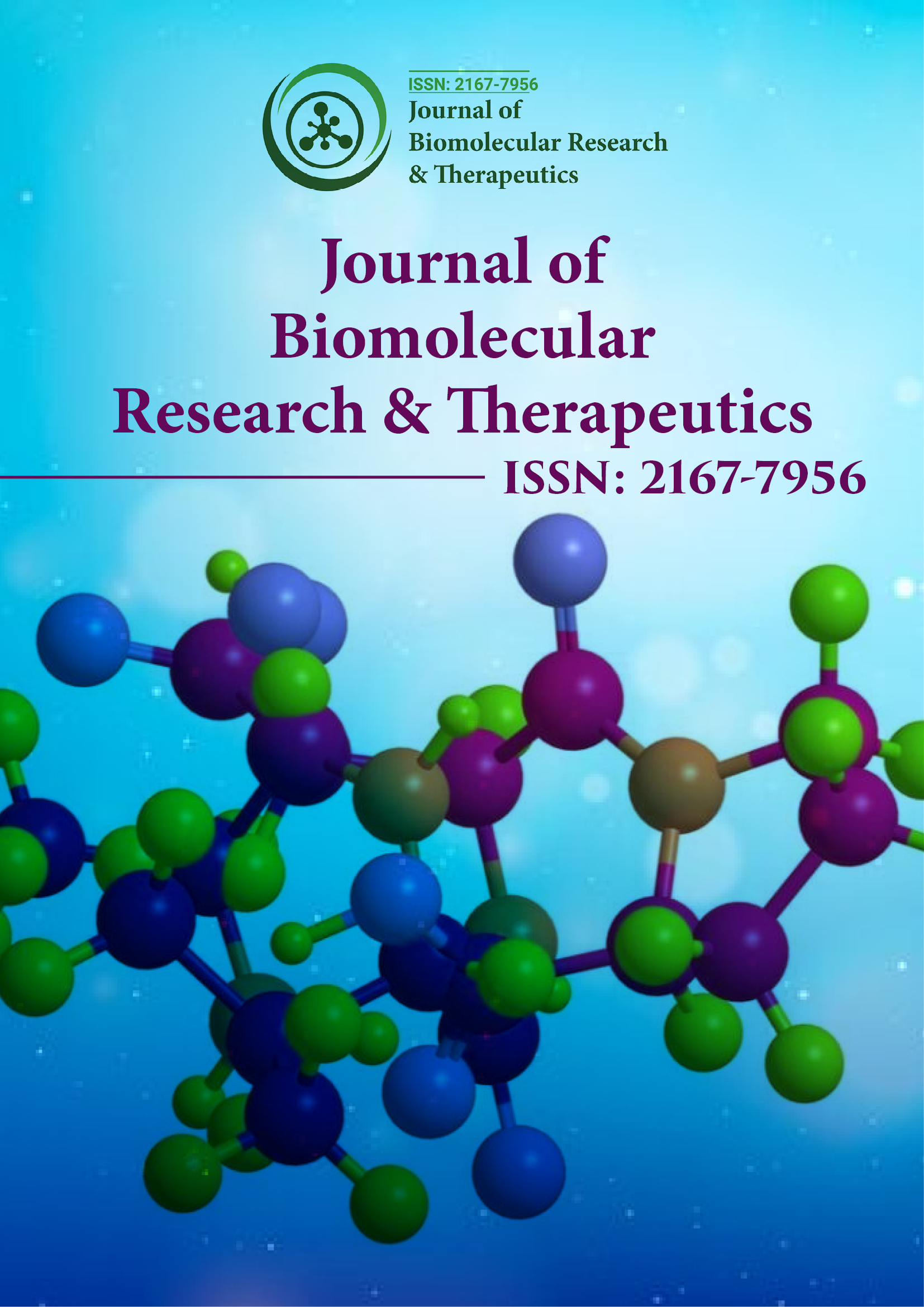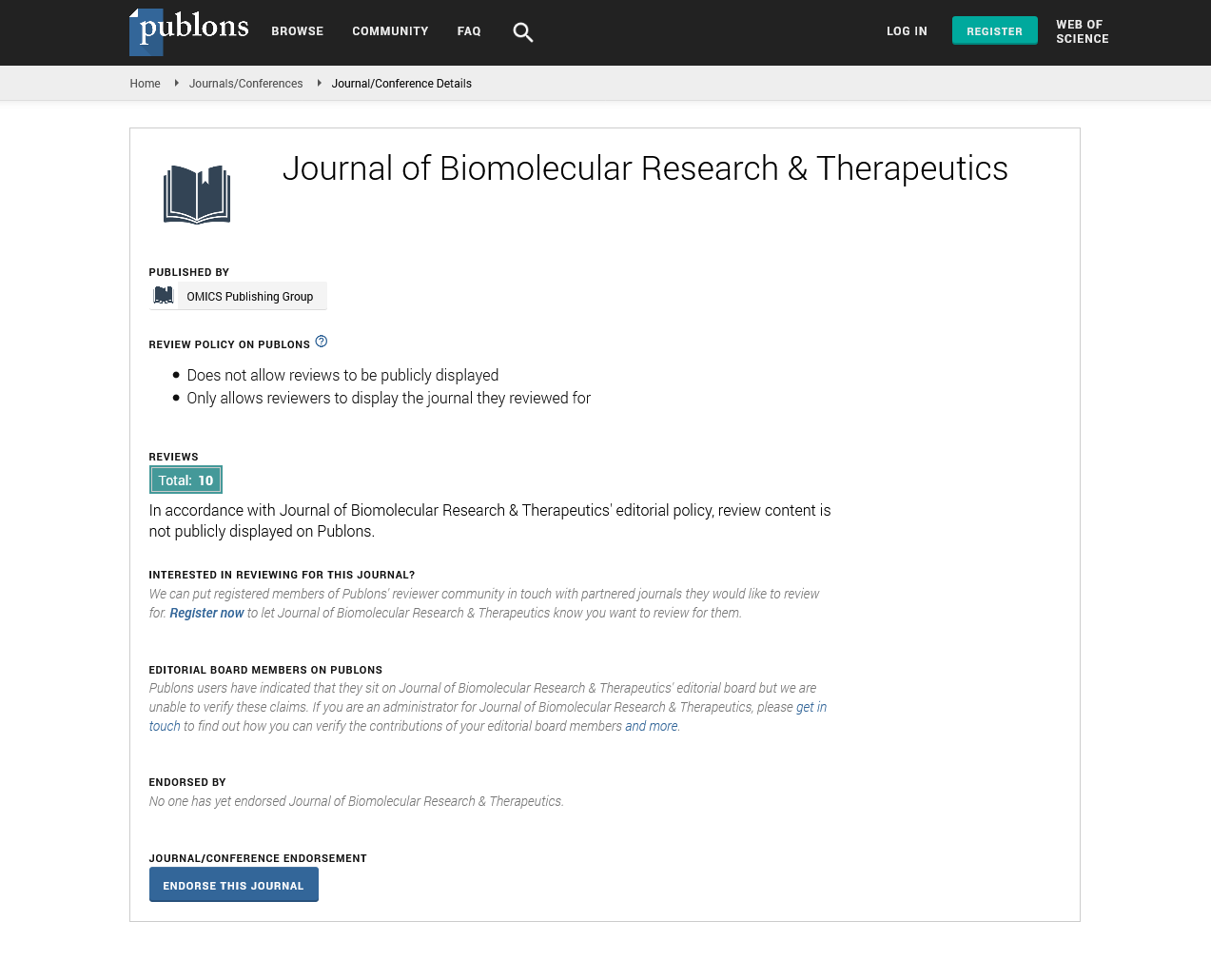Indexed In
- Open J Gate
- Genamics JournalSeek
- ResearchBible
- Electronic Journals Library
- RefSeek
- Hamdard University
- EBSCO A-Z
- OCLC- WorldCat
- SWB online catalog
- Virtual Library of Biology (vifabio)
- Publons
- Euro Pub
- Google Scholar
Useful Links
Share This Page
Journal Flyer

Open Access Journals
- Agri and Aquaculture
- Biochemistry
- Bioinformatics & Systems Biology
- Business & Management
- Chemistry
- Clinical Sciences
- Engineering
- Food & Nutrition
- General Science
- Genetics & Molecular Biology
- Immunology & Microbiology
- Medical Sciences
- Neuroscience & Psychology
- Nursing & Health Care
- Pharmaceutical Sciences
Perspective - (2024) Volume 13, Issue 6
Advancing Sustainability in Biopharmaceutical Downstream Processing: Innovations and Strategies for a Greener Future
Isaksson Nilsson*Received: 29-Nov-2024, Manuscript No. BOM-24-28352; Editor assigned: 02-Dec-2024, Pre QC No. BOM-24-28352 (PQ); Reviewed: 16-Dec-2024, QC No. BOM-24-28352; Revised: 23-Dec-2024, Manuscript No. BOM-24-28352 (R); Published: 30-Dec-2024, DOI: 10.35248/2167-7956.24.13.417
Description
In recent years, sustainability has emerged as a key priority across all industries and the biopharmaceutical sector is no exception. Downstream Processing (DSP), the phase in biopharmaceutical production where valuable products such as monoclonal antibodies, vaccines and cell therapies are purified, concentrated and formulated, has significant environmental, economic and social implications. With the rising demand for biopharmaceuticals, coupled with the increased scrutiny on environmental impacts and regulatory pressures, the sustainability of DSP is more essential than ever. Improving the sustainability of DSP not only reduces costs and environmental footprint but also aligns the biopharmaceutical industry with global sustainability goals.
The biopharmaceutical industry is responsible for a considerable environmental footprint, especially during downstream processing. The multi-step purification process often requires the use of large volumes of chemicals, reagents and solvents, generating significant amounts of waste. Moreover, high energy consumption is a common characteristic of many DSP techniques, such as chromatography, ultrafiltration and tangential flow filtration. The need for ultra-pure materials often leads to over-engineering in manufacturing, increasing both energy usage and the overall cost of production.
Water usage in DSP is another major concern. Biomanufacturing facilities use enormous quantities of purified water for various steps, including buffer preparation, cleaning and equipment sterilization. According to estimates, some manufacturing plants use up to 10 L of water for every liter of product. The treatment and disposal of these wastewater streams often pose additional challenges. Additionally, the transportation and storage of bulky equipment and chemicals used during DSP contribute to greenhouse gas emissions, further adding to the industry’s environmental burden.
To address these sustainability concerns, the biopharmaceutical industry has increasingly turned to more environmentally friendly alternatives, both in terms of reducing resource consumption and minimizing waste. Several strategies are emerging, including innovations in membrane technology, greener solvents and more efficient purification methods.
One of the most promising innovations in DSP is the advancement of membrane-based technologies. Membrane filtration, which involves the use of porous materials to separate molecules based on size, offers a more sustainable alternative to traditional chromatography, which often requires toxic solvents and produces significant waste. Membrane technologies are not only more energy-efficient but can also be operated at larger scales and reduced costs, leading to more sustainable production processes.
Recent developments in membranes, such as ceramic membranes and polymeric materials, have enabled more efficient separation of proteins and other biomolecules, reducing the need for chemical reagents. Membrane-based processes also produce less waste, as many systems can be integrated into a continuous processing flow, minimizing the use of single-use components.
The use of traditional solvents in biopharmaceutical manufacturing raises concerns due to their toxicity, potential for environmental contamination and resource intensity. Greener solvents, such as ionic liquids, supercritical fluids, or biologically derived solvents, are gaining traction as environmentally friendly alternatives. These solvents often require fewer hazardous chemicals and can be more easily recycled or disposed of.
Additionally, efforts are being made to develop biodegradable reagents and chemicals to replace harmful compounds that are commonly used in DSP. Innovations in process chemistry and biocatalysis offer the potential for reducing the reliance on harsh chemicals, thereby lowering the environmental impact while maintaining high product yields.
Another significant shift in biopharmaceutical DSP is the move toward Continuous Manufacturing (CM). Unlike traditional batch processing, which involves multiple steps and large volumes of materials, continuous manufacturing allows for a more efficient, streamlined process. By keeping materials flowing through the system without interruption, CM can reduce waste, energy consumption and raw material usage.
Conclusion
Improving the sustainability of biopharmaceutical downstream processing is a critical component of achieving a greener and more efficient biomanufacturing sector. By adopting innovative technologies such as membrane-based separation systems, greener solvents, continuous manufacturing and process intensification, companies can reduce environmental impacts while improving the cost-effectiveness of their operations. As the industry continues to prioritize sustainability, the future of biopharmaceutical DSP holds the promise of more efficient, environmentally friendly and economically viable production methods that benefit both businesses and the planet.
Citation: Nilsson I (2024). Advancing Sustainability in Biopharmaceutical Downstream Processing: Innovations and Strategies for a Greener Future. J Biomol Res Ther. 13:417.
Copyright: © 2024 Nilsson I. This is an open access article distributed under the terms of the Creative Commons Attribution License, which permits unrestricted use, distribution, and reproduction in any medium, provided the original author and source are credited.

